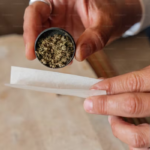What You Really Need to Know:
- COAs are Your Cannabis Truth-Teller: A Certificate of Analysis (COA) is a detailed lab report that reveals the chemical profile, safety, and quality of a cannabis product, including pre-rolls.
- Essential for Safety & Potency Verification: COAs verify potency claims (THC, CBD, minor cannabinoids), ensure products are free from harmful contaminants (pesticides, heavy metals, microbials), and confirm the absence of residual solvents.
- Beyond THC Percentage: While THC content is important, a COA offers a holistic view of quality. Terpene profiles significantly influence the “entourage effect” and overall experience (e.g., myrcene for relaxation, limonene for mood elevation).
- Know What to Look For: Pay attention to cannabinoid percentages, terpene types and levels, and the results of safety testing for contaminants, heavy metals, microbials, and residual solvents.
- Verify Authenticity: Always cross-check a COA by confirming the lab’s accreditation, checking dates for freshness, and matching batch numbers to your product.
- Not All COAs Are Equal: Testing procedures and standards can vary between labs. Prioritize products tested by reputable, accredited laboratories.
- Empower Your Choices: Understanding COAs allows you to make informed decisions, align product effects with your desires, and advocate for transparency and safety within the cannabis industry.
- Industry Standard & Future Growth: COAs raise the bar for producers, building consumer trust. The future may bring more detailed genetic data and standardized international metrics.
Navigating the cannabis market can feel overwhelming, especially when you’re trying to understand what’s truly inside the pre-roll you’re about to enjoy. That’s where Certificates of Analysis (COAs) come into play. These lab-generated documents offer valuable insight into product safety, potency, and overall quality assurance, giving you the peace of mind you deserve. Let’s unpack this together.
What Exactly is a Certificate of Analysis (COA)?
A COA is a detailed report provided by an accredited laboratory that outlines the chemical profile of a cannabis product. For pre-rolls, this includes cannabinoid content, terpene profiles, contaminants, and safety metrics. Essentially, it’s your pre-roll’s lab test result—confirming that you’re getting exactly what’s promised on the package.
Why Are COAs Important?
Think of a COA as your cannabis truth-teller. In a largely unregulated market, lab testing and transparency help keep producers accountable and consumers safe. A reliable COA can verify potency claims, ensure products are free from harmful substances, and even confirm the legality of your pre-roll in your area.
Breaking Down the COA: What to Look For
Cannabinoid Content
This section of the COA provides a clear breakdown of THC, CBD, and other cannabinoids. Potency levels directly affect your experience, making this section vital.
For example:
- THC: Responsible for psychoactive effects.
- CBD: Offers therapeutic benefits without the high.
- Minor cannabinoids (CBG, CBN): Provide additional effects like relaxation or sleep aid.
Terpene Profiles
Terpenes aren’t just about aroma—they significantly influence your experience through the entourage effect. Identifying these can help tailor your cannabis experience. Common terpenes include:
- Myrcene: Relaxing effects.
- Limonene: Mood-elevating, stress-relief.
- Pinene: Enhances focus and alertness.
Safety Testing: Contaminants and Heavy Metals
COAs report on potential contaminants, such as:
- Pesticides: Residues from cultivation.
- Heavy metals: Like lead, mercury, cadmium, and arsenic.
- Microbials: Bacteria, mold, or fungi.
Ensuring these levels are below regulatory limits safeguards your health.
Residual Solvents
For pre-rolls infused with extracts, solvent testing ensures no harmful chemicals remain. Quality labs test for solvents like butane, ethanol, and propane.
Understanding Lab Testing Methods
Different testing methods include High-Performance Liquid Chromatography (HPLC) for cannabinoids and Gas Chromatography-Mass Spectrometry (GC-MS) for terpene analysis. Familiarity with these methods boosts your confidence in reading COAs.
Common Misconceptions About COAs
- “Higher THC always means better quality”: Quality isn’t solely about THC levels. Balance, purity, and the absence of contaminants matter significantly.
- “COAs are standard across labs”: Testing procedures can vary. Choosing products tested by reputable labs is crucial.
How to Verify a COA’s Authenticity
Always cross-check COAs by:
- Confirming the lab’s accreditation.
- Checking dates for freshness.
- Matching batch numbers to your product.
Real-World Example: Reading a Pre-Roll COA
Imagine purchasing a pre-roll labeled as “relaxing and sleep-promoting.” The COA should reflect high levels of myrcene, moderate THC, perhaps CBD or CBN, and clearly show no harmful contaminants.
Regulatory Standards and COAs
Regulations vary widely, but responsible producers aim to meet or exceed standards. U.S. states like California and Colorado have strict regulations demanding thorough COAs for all cannabis products.
Tips for Consumers: Using COAs for Better Choices
- Always request COAs for transparency.
- Match COA results with your desired effects.
- Avoid products without clear or recent COAs.
The Role of COAs in the Cannabis Industry
COAs raise the bar for industry standards. Transparent, comprehensive testing promotes consumer safety, builds trust, and elevates the overall quality of cannabis products.
Future of Lab Testing: Innovation Ahead
Future COAs might include more detailed genetic data or standardized international metrics, further improving consumer confidence and global cannabis trade.
Final Thoughts: Empowering Your Cannabis Choices
Understanding COAs empowers you to make informed decisions. It’s about quality assurance, safety, and a more predictable cannabis experience. Next time you buy a pre-roll, glance at its COA—your guide to safe, satisfying cannabis enjoyment.
By fully understanding pre-roll lab results and COAs, you’re not just choosing better cannabis—you’re advocating for transparency and safety in the industry you love.
Here are the key takeaways and FAQs sections based on the provided text about decoding pre-roll lab results and COAs:
Frequently Asked Questions (FAQs) about Pre-Roll Lab Results & COAs
What is a COA and why is it important for pre-rolls?
A COA (Certificate of Analysis) is a detailed report from an accredited lab showing the chemical profile of a cannabis product. For pre-rolls, it’s crucial because it verifies potency (THC, CBD), lists terpene profiles, and confirms the absence of harmful contaminants like pesticides, heavy metals, and mold, ensuring safety and quality.
What key information should I look for on a pre-roll COA?
You should look for:
- Cannabinoid Content: Percentages of THC, CBD, and minor cannabinoids (e.g., CBG, CBN).
- Terpene Profile: A breakdown of terpenes like myrcene, limonene, and pinene, which influence effects and aroma.
- Safety Testing: Results for pesticides, heavy metals, microbials (mold, bacteria), and residual solvents (if extracts are used).
Does a higher THC percentage always mean a better quality pre-roll?
No, not necessarily. While THC contributes to psychoactive effects, quality is also determined by the presence of a diverse terpene profile, the absence of contaminants, and the overall balance of cannabinoids. A high-THC product with contaminants is not a quality product.
How can I verify the authenticity of a COA?
To verify a COA’s authenticity, you should:
- Confirm the testing lab’s accreditation.
- Check the date of the test to ensure it’s recent and relevant to the batch.
- Match the batch number on the COA to the batch number on your pre-roll packaging.
Are COAs standardized across all cannabis labs?
No, testing procedures and reporting formats can vary between different labs. It’s important to choose products from producers who work with reputable, accredited labs known for their thoroughness and accuracy. Regulatory standards also vary by region.
What are terpenes and why are they important in a pre-roll?
Terpenes are aromatic compounds found in cannabis that contribute to its unique smell and flavor. More importantly, they interact with cannabinoids to create the “entourage effect,” influencing the overall experience. For example, myrcene is associated with relaxation, while limonene can be uplifting.
What are “residual solvents” and why are they tested for in pre-rolls?
Residual solvents are chemicals used in the extraction process for cannabis concentrates (which might be infused into some pre-rolls). Labs test for them to ensure no harmful residues like butane, ethanol, or propane remain in the final product, which could be dangerous if inhaled.
What should I do if a pre-roll product doesn’t have a COA or the COA seems incomplete?
It’s strongly advised to avoid products without clear, accessible, and recent COAs. The absence of a COA indicates a lack of transparency and could mean the product has not been tested for safety or potency, posing potential health risks. Always request COAs for transparency.





